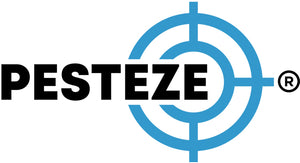KEEP YOUR GREENHOUSE LEAF-MINER FREE WITH SIMPLE PREVENTION STRATEGIES

KEEP YOUR GREENHOUSE LEAF-MINER FREE WITH SIMPLE PREVENTION STRATEGIES
Summary
Greenhouses provide the perfect environment for plants—and unfortunately, for pests like leaf miners too. These tiny insects tunnel inside leaves, reducing plant health and crop yield. By using preventive strategies such as sanitation, exclusion, and natural control methods, you can keep your greenhouse protected and thriving.
Features
-
🧹 Maintain Greenhouse Cleanliness – Remove plant debris, fallen leaves, and weeds regularly.
-
🌿 Use Insect-Proof Netting – Block adult flies from entering and laying eggs.
-
🧼 Sanitize Tools & Trays – Prevent accidental transfer of pests between plants.
-
🦋 Encourage Beneficial Insects – Introduce parasitic wasps to naturally reduce larvae.
-
🍋 Apply Natural Sprays – Neem oil and insecticidal soap help disrupt pest lifecycles.
-
🔍 Monitor Crops Consistently – Check plants weekly for trails and eggs to act early.
Guide Description
Greenhouses create a controlled environment for year-round plant growth, but they also provide ideal conditions for pests such as leaf miners. These insects are the larvae of small flies that tunnel through leaf tissue, leaving behind distinctive squiggly trails that weaken plants and reduce productivity. Without proper prevention, leaf miners can quickly spread in an enclosed greenhouse environment.
The first step in prevention is maintaining strict cleanliness. Dead leaves, weeds, and plant debris serve as breeding grounds for pests, so removing them regularly is essential. Clean walkways, benches, and trays to minimize hiding spots and reduce pest buildup.
Insect-proof netting is another highly effective solution. Installing fine mesh screens over vents, doors, and openings prevents adult flies from entering your greenhouse and laying eggs on plants. Combined with physical barriers, this measure significantly reduces infestations.
Sanitation should also extend to tools and trays. Leaf miner eggs or larvae can be unintentionally transferred between plants when tools aren’t cleaned. Disinfecting shears, pots, and propagation trays after each use helps stop the spread of pests.
Biological control is a sustainable option for greenhouse growers. Beneficial insects such as parasitic wasps specifically target leaf miner larvae, killing them before they can mature. Introducing these natural enemies ensures long-term, eco-friendly pest management without chemicals.
When infestations begin to appear, natural sprays like neem oil and insecticidal soap are safe and effective. Neem oil disrupts the insect life cycle, while insecticidal soaps weaken larvae on contact. Both are gentle on beneficial insects when applied correctly, making them excellent greenhouse-friendly choices.
Finally, consistent monitoring is crucial. Inspect plants weekly for telltale signs of leaf miner activity, such as winding trails or small white spots where eggs may be laid. Early detection allows you to remove affected leaves and apply targeted treatments before infestations spread throughout the greenhouse.
By combining cleanliness, exclusion methods, biological control, and natural sprays, you can prevent leaf miners from becoming a major issue in your greenhouse. These strategies not only protect your plants but also support a healthier, more productive growing environment.
- Devansh Subbagari


Comments 0